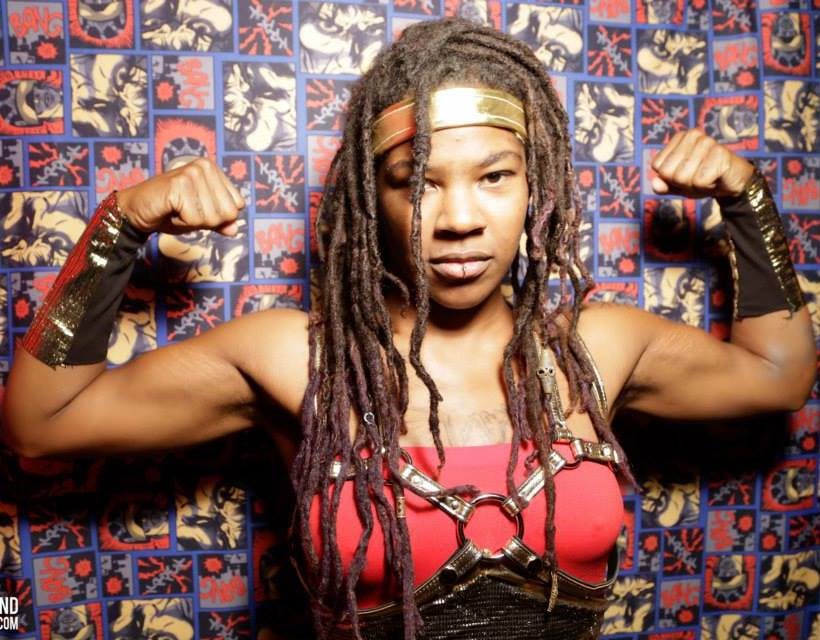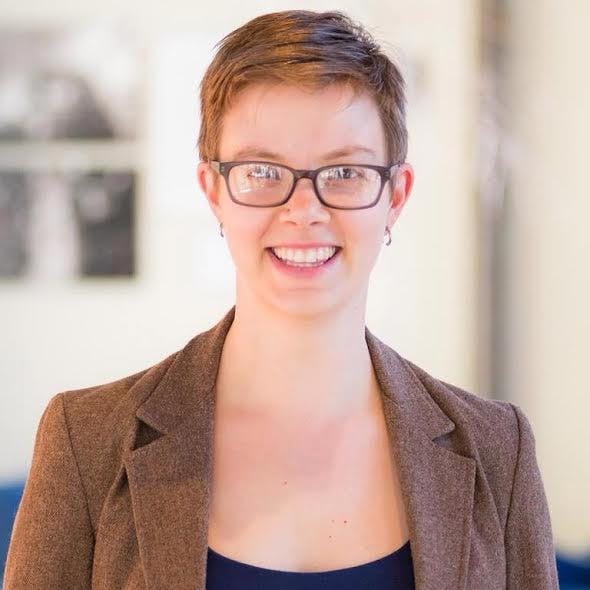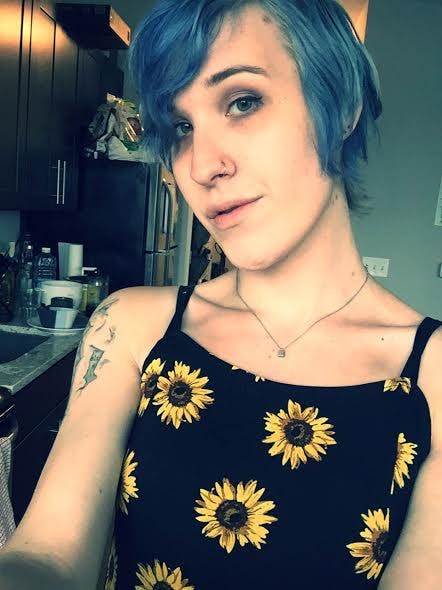My last three girlfriends have all told me that I look straight.
That’s not what you expect to hear from another woman whose clitoris you’ve licked a few dozen times, but it’s the kind of thing I’ve heard in various forms for years. I’m a femme lesbian, a lipstick lez, a lady dyke, a girly-girl with long hair and painted fingernails.
In nearly 20 years of dating women, I’ve had to field a number of surprising comments and reactions to my sexual preference and identity as a dyke. “You’re too pretty to be a lesbian,” a gay male newspaper editor once told me with a dismissive wave of his hand when I went for a job interview. I’ve been ranted at by strangers in lesbian bars who essentially told me to go back to Straightsville where they mistakenly thought I belonged. More recently, I sat in a group made up entirely of lesbian, queer, and trans-masculine people who were discussing dating in the queer scene. Someone turned to me and said, “I’m sorry, I don’t want to assume you’re queer.” Which I responded to with a curt “Why not?” Why wouldn’t someone assume I was a lesbian in such a clearly defined environment? Answer: I look straight.
Being straight-looking—whatever the hell that means—has its privileges, of course. I feel comfortable traveling to just about any part of the United States without fearing for my safety. I can blend in and pass for straight if needed. I can capitalize on being attractive to men, if I want to, with jobs in the fashion, service or sex industries. But more often than not, constantly being mistaken for heterosexual bothers me. It’s a dismissal of my identity that shoves me into the closet, unwillingly, over and over.
I wasn’t always mistaken for straight. Ironically, I looked very much like a boy during my late teens and early 20s—during a phase in which I primarily dated guys. Back then, I was assumed to be gay due to the short hair and suits that I wore, which contributed to my internal struggle to figure out what I actually was. I’d spent my childhood swinging wildly back and forth between genders—sometimes looking like a boy, sometimes looking like a girl, fielding the inevitable odd looks and questions.
My Catholic grandmother (seriously, bless her heart) even sensed that something was different about me, and bought a copy of the Ms. magazine-published feminist children’s book Stories for Free Children when I was just six years old. Inside was a story by Lois Gould titled X, about a child that had no gender.
Nobody in X’s class had ever known an X. Nobody had even heard grown-ups say, “Some of my best friends are Xes.” What would other children think? Would they make Xist jokes? Or would they make friends? You couldn’t tell what X was by its clothes. Overalls don’t even button right to left, like girls’ clothes, or left to right, like boys’ clothes. And did X have a girl’s short haircut or a boy’s long haircut?
I guess it’s because of childhood bedtime stories like those that I never felt like my gender expression was constricted by convention. When I slept with mostly men, I looked like a man. As I dated more and more women, I felt more comfortable with femininity. Like many queers, “coming out” wasn’t something that happened in a single day for me. It was a lifelong private process, something I didn’t even really talk to friends and family about. For a while it seemed like everyone but me knew exactly what I was—but their certainty disappeared in my mid-20s when I grew out my hair, started wearing makeup and jewelry, and became effectively invisible in the queer scene.
It’s that long, uphill climb to self-discovery that makes me so desperately want to be recognized as queer. I fought for my identity, scrambled to piece it all together during a time in the 1980s and 1990s before there were LGBT characters on TV, and the only lesbian I’d ever heard of was Martina Navratilova. When I was coming out, I wasn’t aware that being feminine and being a dyke at the same time was even an option. Having never heard the words transgender, or genderqueer, or butch, or or femme, I existed in my own weird sphere of gender expression and complicated sexuality. It was lonely, and I spent about a decade in quiet turmoil, battling my seeming lack of ability to reconcile myself with the world I saw around me.
Having gone through all that, I have a deeply offended, knee-jerk reaction to people who tell me I “look straight.” I’ve settled into a comfortable and authentic expression of myself, as a casual, tomboy femme lesbian. As far as I’m concerned, I’m just as visibly gay as a butch diesel dyke. I look queer because I am queer, and thus the definition of what is queer-looking is defined by my existence, not the other way around.
I’m tired of people trying to force lesbian identity into a masculine box—and I’m not the only one.
Femme invisibility has been a longtime struggle for the LGBT community. It’s a problem experienced by feminine lesbians; by bisexual and trans women (both are assumed to be straight by default); and by queer and questioning women whose early romantic relationships with other women are almost always seen as a “phase” or “for attention.” The confusion of gender expression with sexual orientation is just as rampant within the LGBT community as outside of it—in fact, it may be even worse.
To explore the effects and roots of femme invisibility, I spoke with a number of queer-identified women who represent a wide swath of femme identity. Each one leapt at the chance to discuss the issue, and each one’s story showed that the dismissal of the feminine in LGBT women’s identities is a disturbing, and ultimately destructive, problem.
Many of the women interviewed referred to a spectrum of femme identity ranging from “high femme” (think heels, miniskirts, full makeup, purses, acrylic nails) to tomboy or “low femme” (a t-shirt and jeans kind of girl who might wear the occasional dress, might have short hair, is feminine but not into fussing with hairspray and lip gloss). One even identified herself as ‘crunchy,’ which I took to mean a little bit hippie, a little bit food co-op. These are just examples; the spectrum of femininity is as wide in the queer community as it is among all women. A Beth Ditto or an Amber Heard would be considered high femme, while Cara Delevingne and Kristen Stewart might be called low femme tomboys due to their expert navigation of both hoodies and skintight gowns.
Femmes have always been a part of the lesbian community. For just as long, we have struggled to be taken seriously in a culture that deems femininity as little more than a product for the consumption of heterosexual men.
Jen Richards
The bi femme trans woman who has been every sexual orientation there is
“Having been bisexual my whole life, I’ve literally dated straight men, gay men, straight women, lesbians, trans women, trans men. I’ve been seen as lesbian, gay, bi, trans, and queer. I’ve been every letter in LGBTQ.
I’ve always identified as bisexual. I mostly dated women prior to transition and mostly dated men after transition. A lot of that is socially enforced by heteronormativity. I liked boys as a boy but wasn’t comfortable being gay, and as a woman I’m attracted to women but am sort of scared of lesbians. I’d heard some awful things, transphobic things, coming out of the lesbian community.
But now, I’ve fallen into this huge crowd of lesbians. And for many of them, I’m the first trans woman in their circle but they don’t seem to have any issues with it. I’m now considered a viable partner in those circles, but I’m the only trans woman.
It’s a struggle for a trans woman to date anyone. It’s hard to find viable partners; we’re seen as a kink or a fetish. As far as I know, I’m generally not read as queer, or as open to [dating] women. Someone I’m dating right now uses masculine and feminine pronouns, and they bind their chest and things like that. They told me that they weren’t sure if they could date me at first.
I’d be open to [dating] a feminine woman. It would be easier with another trans woman, but I’d be afraid that it would be seen as performative or superficial. There’s still a big aspect of culture that sees femininity as a performance. And that’s a trap that a lot of trans women fear, and we’re under more scrutiny that cisgender women.
But that’s the nature of heteronormativity. We internalize it and take it with us. In gay and lesbian relationships you do see that… the traditional gender roles. You do see a lot of masculine people together. I don’t think I’ve ever seen two high femme women together, though.
The trans issue just eclipses every other issue. It’s so dominant. My trans-ness is what I’m most self-conscious of and what feels definitive. And my default assumption is that I’m not going to be taken seriously as a partner because I’m trans.
The big part we don’t talk about is genitals. We’ve been so careful to not reduce trans people to our genitals, and that’s important. But that is part of sex. I’d like to see us normalizing trans bodies in that way, so that it’s not a big deal.
In Her Story [Richards’ new webseries], the part I play is a trans woman who had been dating men, until she meets this cisgender lesbian and begins dating her. Part of the reason we scripted that the way we did, was to try and help the audience to get over their own shit.”
The invisibility of the high femme-on-femme couple
“I have experienced a ton of invisibility and marginalization, as I am sure you have.
I have like countless stories in the early to mid-2000s of being one of the only out femme person in Portland (that I knew of), being the only person at a dyke party in heels, and of being told at lesbian nights that I was at the wrong party.
I have been attracted to femme people my entire life but I was told by many people in my community over the years that ‘doesn’t really happen’—often by other femmes. Leigh [Rich, Graf’s high femme girlfriend] and I have been dating since the end of last October. So about 10 months.
I think the main thing with Leigh and I is that we had to be so over the top about dating and still people didn’t get it. And I think a lot of people assumed it was just a fling, like we were holding places until we each found butch girlfriends. And I think we were both slightly terrified of the other person doing that too, even though that was never the vibe. But there just aren’t super femme couples in my community.
So I think it was a lot of people not taking it seriously for awhile, in a way that felt really misogynist. Because it’s fucking sexist to assume that two feminine people wouldn’t be serious about each other, and it’s weirdly internalized homophobia.
The first few months we went out and I would leave her side, she would be constantly hit on by a masculine, butch person. That is a really specific example of people not taking us dating seriously. Which is like, I get it, she is hot. But come on—no one would do that if I was butch.
Leigh and I both agree that our experiences with straight people are way less weird than with the queer community. The first six months when we were dating and just chatting up random straight people, they were way chiller than queers.
Also, I have met tons of ‘butch-looking’ people in my life that like to fuck and date cisgender dudes. So it’s, like, really not cool for anyone’s sexuality to be assumed based on their appearance. And I would be totally remiss if I didn’t mention that I think my invisibility, while totally painful and marginalizing in some contexts, is also a location of privilege. I think that trans women in our communities that are femme experience hyper-visibility.”
Leila Hofstein
The black femme go-go dancer battling street harassment
I identify as Afro-queer, [but] most of the time I occupy a space that’s femme of center. With that presentation comes a lot of assumptions about my sexuality. We know there’s a long history of black women’s bodies always being purposed for consumption.
There’s this strange idea that gay black people can’t exist, especially femme women. Our sexuality is always presented for someone else, so even when I am read as gay, it’s often for a straight man’s lesbian fantasy. I have to go through a lot to be read as not straight, even when working as a go-go dancer in queer spaces.
Street harassment is a constant. The more femme I am, the more entitled strangers seem to feel to my body and attention. The other week, upon ignoring holleration from a group of older black men, I got, ‘You would give us the time of day if we was white, huh?’ Not two blocks later, some white dude with cornrows gives me, ‘You would suck it if I was black, huh?’ That’s being a black femme in a nutshell.
I have to have my guard up when I’m [in public] with other femmes, period. Men assume it’s some package deal and tend to be even more aggressive. I’m definitely less affectionate with other femmes in public because I don’t want the hassle. I definitely get fucked with less if I’m with a masculine partner or friend. More so if that person is white.
I’ve stopped worrying about how others perceive my sexuality. I’m outspoken and vulgar enough that people get the hint at some point, plus my dates are so varied that I probably sound straight when talking about my sex life at some points in time.”
Heron Greenesmith
The bisexual woman with a male partner in an LGBT community
“My gender presentation is important to this whole conversation. I do identify as femme, but not very high femme—more like a crunchy tomboy femme. I don’t shave anything, I don’t wear makeup, but I wear feminine clothing and jewelry. When I’m out and about in the world, I think people see someone feminine. Finding this space where I exist has been such an amazing thing for me.
When people in LGBT spaces see me, even when my partner is standing right next to me, and assume that I’m lesbian, it makes me feel like I’m not LGBT enough and it makes me feel bad.
In non-LGBT spaces, people just assume that I’m straight because of my partner and I have to decide whether to come out. And that’s stressful because I either have to suck it up and go on letting someone assume something, or I have to correct them and come out and then it turns into this educational moment.
Mostly I have experienced people laughing at me when I come out as bisexual. I have experienced people questioning the validity or extent of my bisexuality, sometimes in front of other people. I’ve had people question whether bisexuality is even a thing, to my face and in front of my partner.
I have, like many bi folks, experienced people interrogating the validity of my sexual orientation by asking me how many partners I’ve had of various sexes or genders, as if my experience is indicative of my sexual orientation.”
Jamie Johnson
The bisexual femme trans woman in the D.C. queer scene
“I’m a trans woman and my partner is agender but relatively femme presenting. We’ve been ‘gal pal-ed,’ [meaning people have assumed they are just friends, just ‘gal pals,’ solely because both look feminine] I’ve had my presence questioned at queer women’s events where trans men were welcome, and I’ve basically constantly had to explain why I transitioned if I’m just going to date someone with a vagina.
One time, my roommate was asking me why I don’t date guys and why I didn’t identify as gay before [transitioning]. So even people who are really close and supportive ask these questions. Like, ‘Why are you making this hard on yourself, why did you bother going through it?’
I wear dresses, and I wear makeup every day. Even though I’m presenting in this female way, I don’t feel like they see me…I’m an outsider. Everyone is skewing towards this masculine presentation. I’m seen as a femme cisgender woman a lot of the time.
My coming out as queer often comes along with coming out as trans, which carries a whole different set of connotations and issues. The legitimacy of queer women’s relationships are questioned, and the right for me to exist as a trans woman is questioned, too. And that’s a lot tougher, so if I don’t have to bring it up I won’t. For me, there is a risk to being visible or being ‘out’ as it were. For me, being femme is a defense mechanism. The more femme I am, the more I pass. It’s this balance I have to walk between personal comfort and safety, versus how I want to feel aesthetically and how I want to be perceived by my community.
I want to be able to go to the coffee shop and get hit on by a cute girl. Innately, we still buy into our own assumptions. If we see a femme person, we assume she’s straight. And then it’s awkward—always waiting for confirmation and always meeting in queer spaces. The phrase we use in D.C. is les-bros: tank top, flat brim cap, sneakers. And they’re the ones who are seen as desirable.”
The stories of these five femme women, as well as my own, all stand to illustrate an insidious problem in LGBT, and specifically lesbian, communities. Femininity is sometimes seen as the opposite of queer, for mysterious reasons that have no provable basis. Some call it internalized homophobia; others call it misogyny. Either way, feminine women are not taken seriously—no matter how many times they clearly state who they are and what they want.
Trans feminist theory writer Julia Serano’s 2013 book Excluded tackles the strange shunning of femininity in female-centric communities, summarized in the following passage.
It is commonplace for people in both the straight mainstream as well as within our queer and feminist circles to presume that feminine gender expression is more frivolous, artificial, impractical, and manipulative than masculine gender expression, and that those of us who dress or act femininely are likely to be more tame, fragile, dependent, and immature than our masculine or ‘gender neutral’ counterparts. By reclaiming femininity, those of us who are femme are engaged in a constant process of challenging these negative assumptions that are routinely projected onto feminine gender expression.
Whatever the twisted roots of femme invisibility, femmes are actively working to fight it from inside queer communities. Blogs like Femmeonamission.com, and an annual Femme Conference are just a small part of the movement to celebrate femmes within the LGBT community. Writer Jamal Lewis—who is compiling an anthology on femme and gender non-conforming people of color—reminds us that ‘femme’ is an identity that can be claimed by anyone of any gender, and its dismissal and devaluation can be experienced by all who claim it.
With cries of ‘femme solidarity,’ queer femmes are banding together to fight the idea that femininity is somehow less valuable or desirable, somehow less queer, than masculinity.
Photo via Pexels.com (CC0)

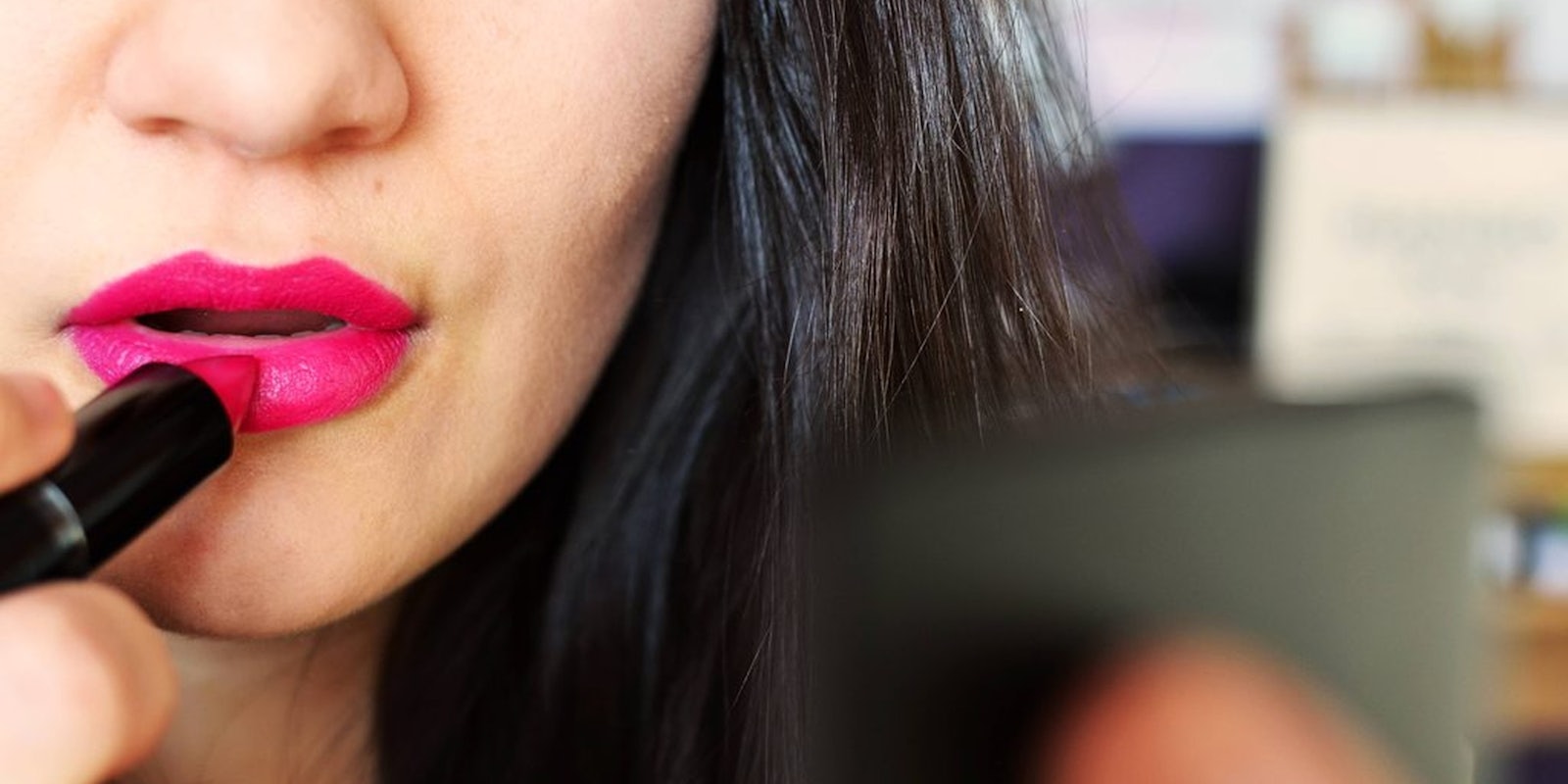
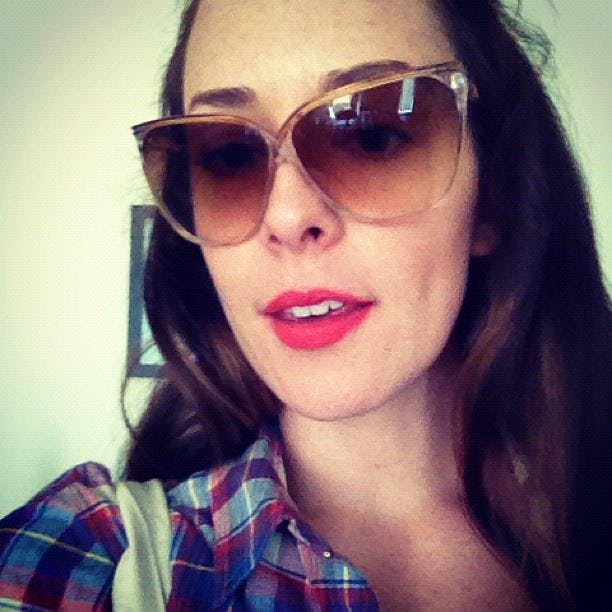
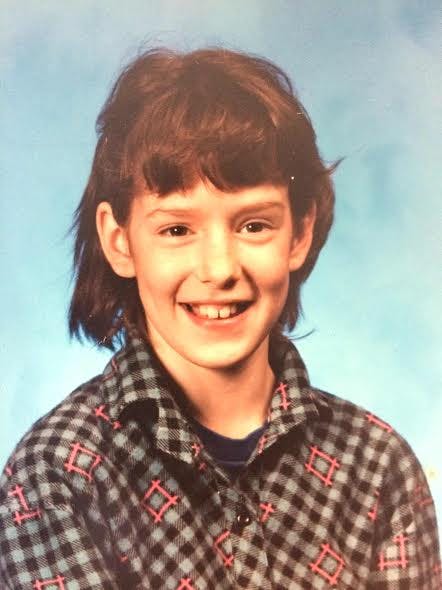
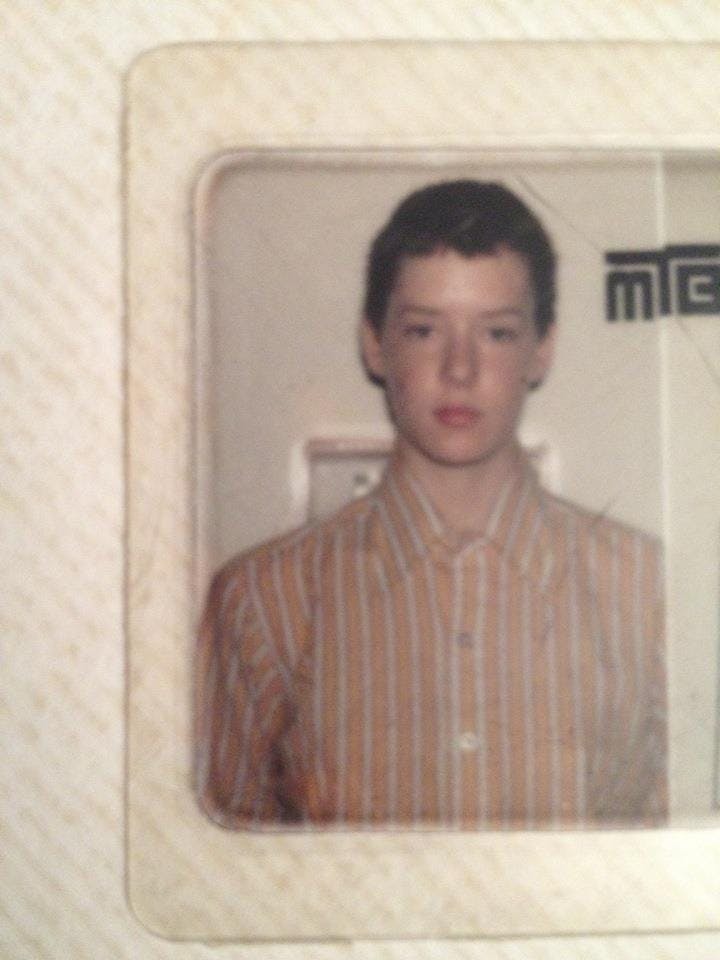
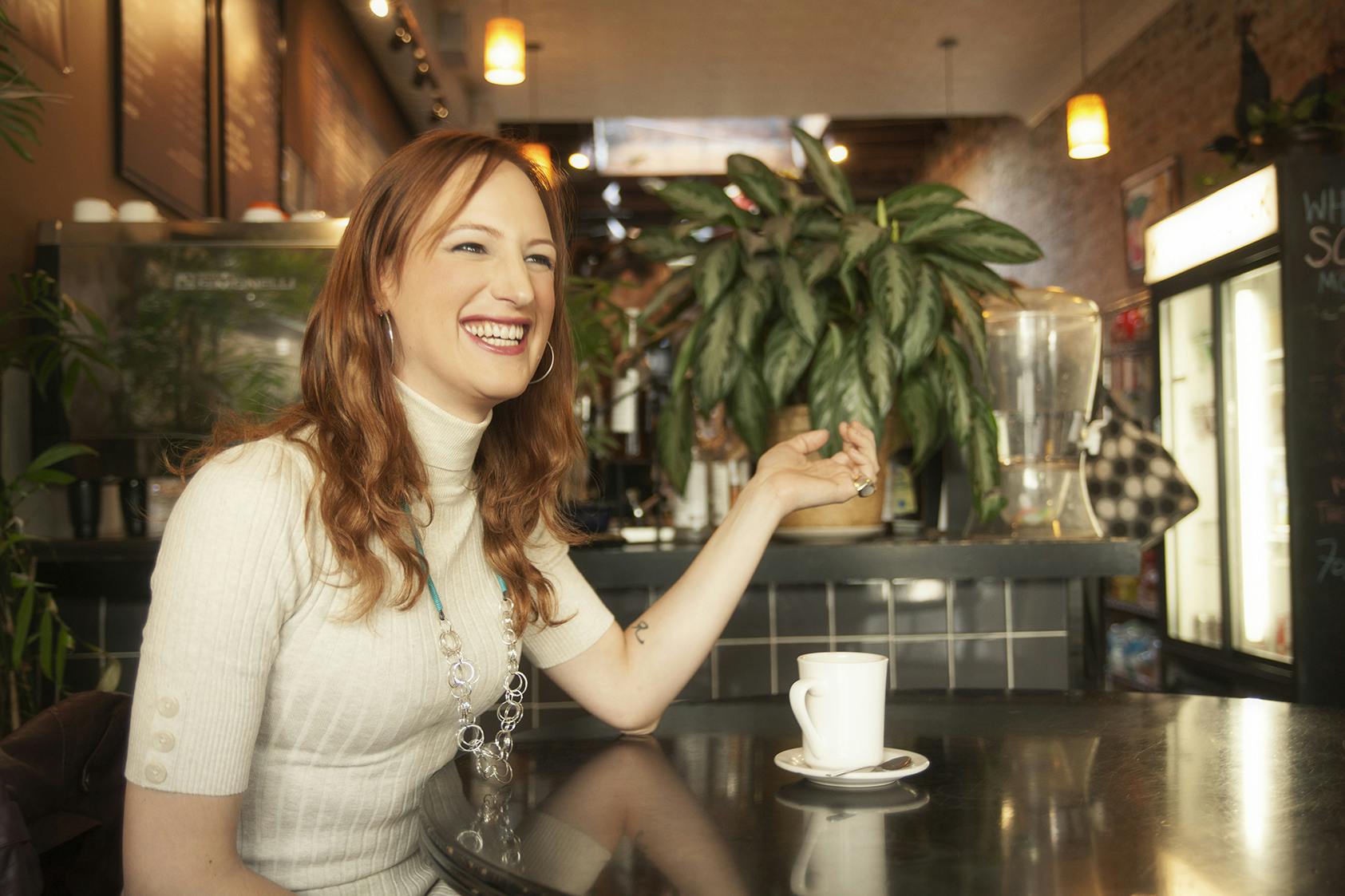
![Leigh Rich [L] and Adrienne Graf [R]](https://uploads.dailydot.com/984/35/5SKNQPKl.jpg?auto=compress%2Cformat&ixlib=php-3.3.0)
